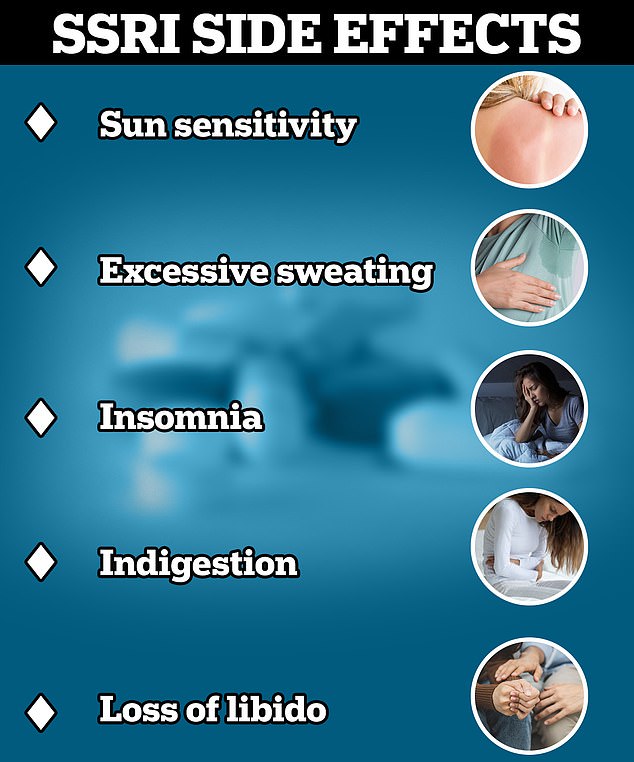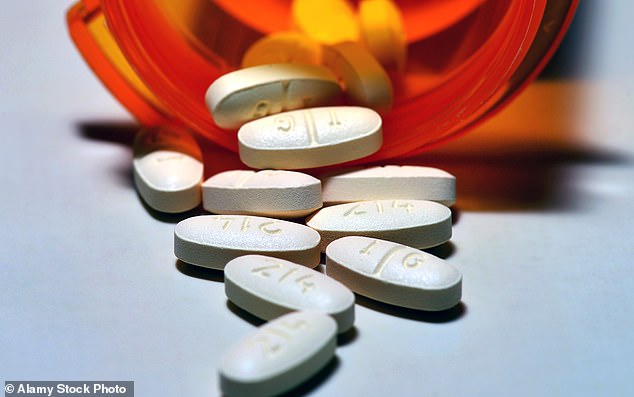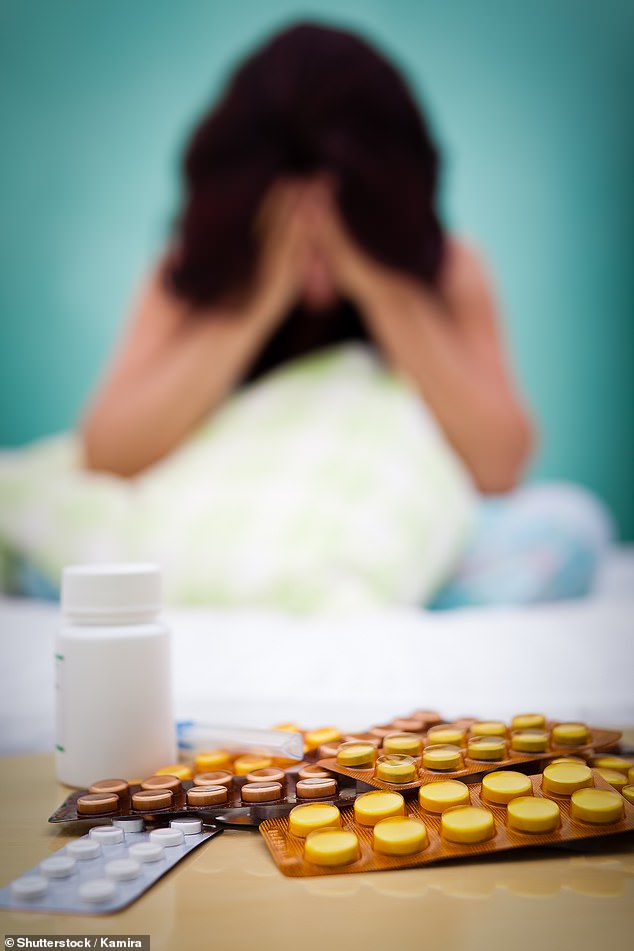It’s been nearly 20 years since Tom Cruise‘s infamous outburst on the Today show, where he passionately railed against antidepressants and called psychiatry a ‘pseudoscience.’
At the time, the rant was widely mocked — and Cruise was dismissed as a Hollywood eccentric for spouting controversial views.
But now, with a record number of young Americans being diagnosed with depression and prescriptions for antidepressants soaring among teens and 20-somethings, Cruise’s tirade is being viewed in a new light.
Today, new CDC data showed that nearly 18 percent of Americans had depression in 2023, an all-time high. In 2005, when Cruise’s controversial interview aired, that figure was about 5.4 percent.
At the same time, the agency revealed that 11 percent of Americans were taking antidepressants in 2023. While that figure has dropped slightly in recent years, the top-line figure hides a dramatic surge among younger adults: antidepressant use among 18- to 24-year-olds has jumped 35 percent from 2018 to 2023.
Cruise, a long-time critic of what he views as the over-prescription of psychiatric drugs – particularly to young people – warned in that 2005 interview about the influence of Big Pharma and the quick-fix mentality he believed was being sold to vulnerable youth.
And the data seems to support at least part of his concern, according to Dr Sarah Boss, a psychiatrist in New York City who worries about overprescribing.
She told DailyMail.com: ‘When we medicate a condition, whether it be ADHD or depression, we put a band-aid over a wound.
‘Without the medication, nothing has changed. When it comes to mental health, we need to focus on sustainable, long-term solutions to help people overcome the root cause of their issue.’
A clip of Cruise’s interview has resurfaced on social media, where it’s been viewed millions of times.
In his explosive interview, Cruise said that all antidepressants do ‘is mask the problem. You’re not getting to the reason why.’
He also claimed that ‘there is no such thing as a chemical imbalance,’ a leading though controversial theorized cause of depression and other mental disorders.
He said: ‘If you start talking about chemical imbalance, you have to evaluate and read the research papers on how they came up with these theories of chemical imbalance in the brain. There is no science behind it.’
The idea that depression is caused by a ‘chemical imbalance’ in the brain started in the 1950s, when the first psychiatric drugs were developed.
Scientists believed that low levels of brain chemicals like serotonin and norepinephrine could cause low mood—and that medication could help fix it.
But over the past 25 years, many experts have questioned this theory, saying it’s far too simple.
Most now agree that mental illness is caused by a mix of things – not just brain chemicals, but also genetics, life experiences, stress, and even differences in brain structure.
Dr Boss said: ‘In some cases, medication can be a fantastic asset to help someone in a severe case get back on their feet or to manage the pain of a detox, for example.
‘But it is not a long-term solution for mental health struggles. We need an integrative approach, not a quick fix.’

In his explosive interview, Cruise said that all antidepressants do ‘is mask the problem. You’re not getting to the reason why’
Back in the 1950s and 60s, doctors didn’t have brain scans or blood tests to prove the theory. They just noticed that some drugs seemed to lift people’s moods.
One of those drugs, called iproniazid, was originally used to treat tuberculosis. But patients on it felt happier, which led scientists to look at how it affected brain chemicals. It turned out to boost levels of serotonin, dopamine, and norepinephrine—all linked to mood.
Meanwhile, another drug called reserpine, used for high blood pressure, often made people feel depressed. It lowered those same brain chemicals.
Then, in the 1980s, a new type of drug called SSRIs—like Prozac—was introduced. These targeted serotonin specifically and became the most well-known antidepressants, helping make the ‘chemical imbalance’ theory even more popular.
SSRIs have come under increased scrutiny in recent years based on growing concerns about their side effects.
SSRIs commonly cause sexual dysfunction, weight gain, insomnia, headaches, nausea, and dizziness.
People may also experience emotional numbing, to the point where they feel disconnected from life and less emotionally reactive.

Frequent side effects of SSRIs include indigestion, insomnia and loss of libido, according to the NHS. But they could also trigger excessive sweating and increase sensitivity to the sun
Despite concerns that doctors dole out prescriptions for antidepressants too readily, they have been deemed effective in myriad clinical trials and have become the standard of care for depression and other mood disorders.
In 2018, a sweeping meta-analysis by a coalition of international psychiatrists looked at how 21 different antidepressants perform in treating major depression in adults.
They found that all the antidepressants worked better than a placebo.
In 1999, scientists identified that a common SSRI called Celexa was highly effective in people with depression. Doses of the drug, especially at 40 mg and 60 mg, led to significantly greater improvements in depression symptoms, particularly in mood, melancholia, and cognitive issues, compared to the placebo.
Even lower doses of 10 mg and 20 mg showed consistent benefits.
In 2018, scientists came to a similar conclusion about sertraline, marketed as Zoloft. Seventy-seven adults with major depression were randomly assigned to receive either sertraline (50 mg daily, adjustable up to 200 mg) or a placebo.

Around 11 percent of Americans took antidepressant medication in 2023. Rates of prescriptions are rising among children and young adults
The primary outcome was a 50 percent reduction in the 17-item Hamilton Depression Rating Scale score.
Results also showed that 72 percent of sertraline-treated patients achieved this response, compared to 32 percent in the placebo group.
A doctor typically does not prescribe medication until the patient has tried talk therapy, or is receiving therapy in conjunction with daily medication.
Medications are also typically prescribed to people dealing with moderate to severe depression, rather than someone experiencing mild depression that has not greatly impacted their life.
Still, Cognitive Behavioral Therapy (CBT) and other forms of therapy have also shown strong evidence of efficacy, particularly for mild depression.
The medications work by increasing the availability of serotonin in the brain, which seemed to alleviate symptoms of depression in many patients, though the delay between chemical changes and mood improvement raised questions about how they actually worked.
In 2023, women were more likely to take these medications compared to men – 15 percent (one in seven) versus seven percent, or one in 14.
Adults aged 18-44 were less likely to use antidepressants, with 10.7 percent taking them, compared to about 12 percent of those aged 45-64 and just slightly more among those aged 65-74.
However, there was no major difference in antidepressant use between people aged 75 and older and the other age groups.
Despite ongoing uncertainty about what exactly causes someone to become depressed, medications that correct a neurotransmitter imbalance are still among the most used tools in a psychiatrist’s arsenal, in addition to therapy.

Around 18 percent of Americans currently experience depression, and around 11 percent are medicated for it, according to the CDC
And while doctors typically advise patients to take medication in conjunction with therapy, many people don’t due to a lack of available providers near them or an inability to afford it.
This means many people being treated by psychiatrists, who are primarily responsible for dispensing medications, not acting as a talk therapist, might not be drilling into the root causes of their depression and thus, as Cruise posited, are using medications as a band-aid.
Compared to the US, Canadian doctors prescribe far fewer antidepressants. Between five and nine percent of Canadians take them.
While the use of antidepressants increased significantly during the 1990s and early 2000s, more recent data indicate that this trend has slowed or plateaued.
A 2012 study, for instance, found that the increase in antidepressant use had leveled off compared to earlier decades.
Antidepressant use in the US is on the rise, though.
A study published in the journal Pediatrics found that the monthly antidepressant dispensing rate increased by 66.3 percent between January 2016 and December 2022, with a further 63.5 percent increase after March 2020.
In that same interview, Cruise said that ADHD (Attention Deficit Hyperactivity Disorder) was often misdiagnosed and that the use of drugs like Ritalin and Adderall to treat ADHD was part of a larger problematic trend of over-relying on medication.
The trend has been particularly noticeable in children, with some estimates indicating that around 1 in 10 school-age children in the U.S. were being prescribed ADHD medications in recent years.






